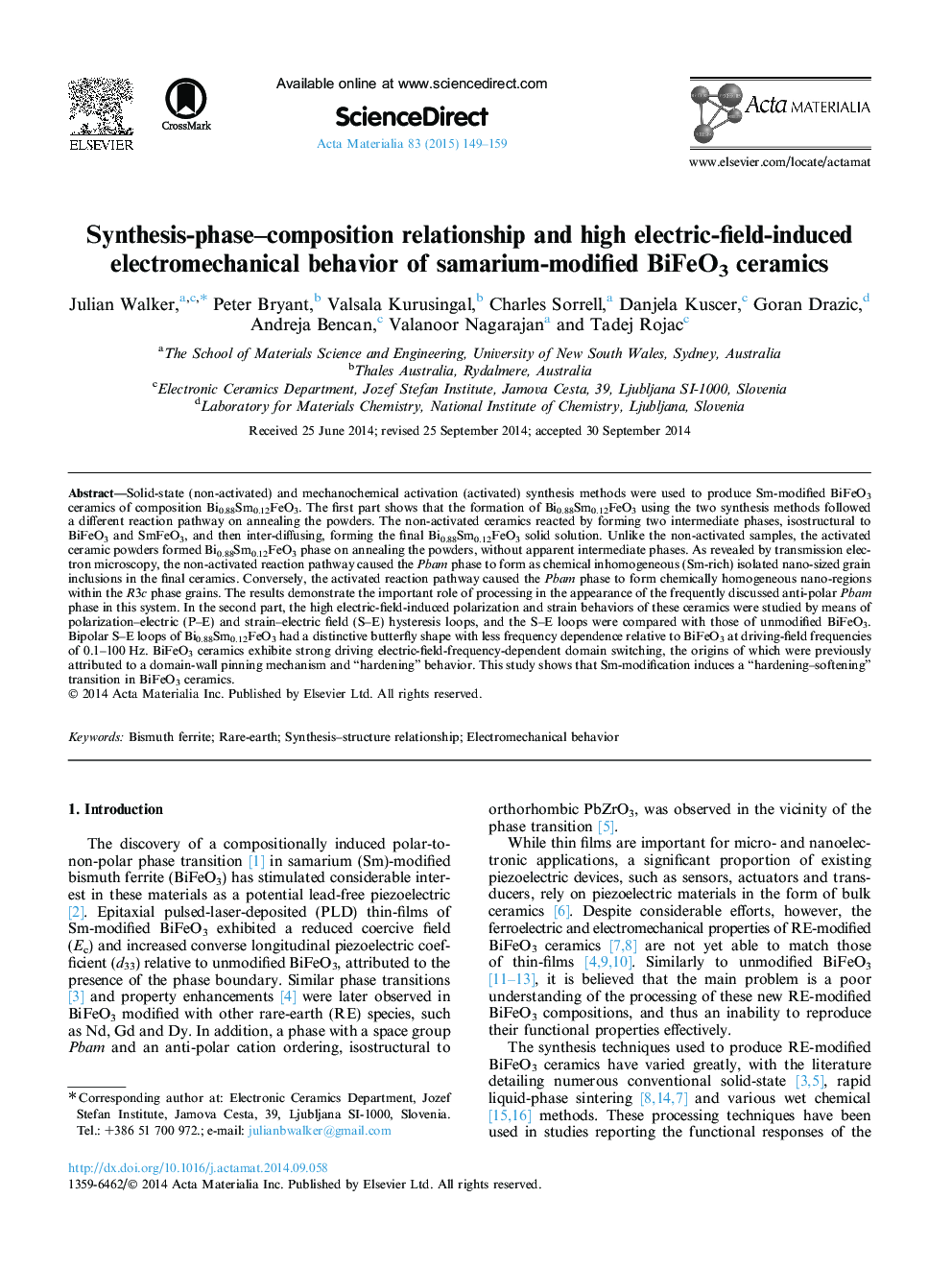| کد مقاله | کد نشریه | سال انتشار | مقاله انگلیسی | نسخه تمام متن |
|---|---|---|---|---|
| 7880903 | 1509593 | 2015 | 11 صفحه PDF | دانلود رایگان |
عنوان انگلیسی مقاله ISI
Synthesis-phase-composition relationship and high electric-field-induced electromechanical behavior of samarium-modified BiFeO3 ceramics
دانلود مقاله + سفارش ترجمه
دانلود مقاله ISI انگلیسی
رایگان برای ایرانیان
موضوعات مرتبط
مهندسی و علوم پایه
مهندسی مواد
سرامیک و کامپوزیت
پیش نمایش صفحه اول مقاله

چکیده انگلیسی
Solid-state (non-activated) and mechanochemical activation (activated) synthesis methods were used to produce Sm-modified BiFeO3 ceramics of composition Bi0.88Sm0.12FeO3. The first part shows that the formation of Bi0.88Sm0.12FeO3 using the two synthesis methods followed a different reaction pathway on annealing the powders. The non-activated ceramics reacted by forming two intermediate phases, isostructural to BiFeO3 and SmFeO3, and then inter-diffusing, forming the final Bi0.88Sm0.12FeO3 solid solution. Unlike the non-activated samples, the activated ceramic powders formed Bi0.88Sm0.12FeO3 phase on annealing the powders, without apparent intermediate phases. As revealed by transmission electron microscopy, the non-activated reaction pathway caused the Pbam phase to form as chemical inhomogeneous (Sm-rich) isolated nano-sized grain inclusions in the final ceramics. Conversely, the activated reaction pathway caused the Pbam phase to form chemically homogeneous nano-regions within the R3c phase grains. The results demonstrate the important role of processing in the appearance of the frequently discussed anti-polar Pbam phase in this system. In the second part, the high electric-field-induced polarization and strain behaviors of these ceramics were studied by means of polarization-electric (P-E) and strain-electric field (S-E) hysteresis loops, and the S-E loops were compared with those of unmodified BiFeO3. Bipolar S-E loops of Bi0.88Sm0.12FeO3 had a distinctive butterfly shape with less frequency dependence relative to BiFeO3 at driving-field frequencies of 0.1-100Â Hz. BiFeO3 ceramics exhibite strong driving electric-field-frequency-dependent domain switching, the origins of which were previously attributed to a domain-wall pinning mechanism and “hardening” behavior. This study shows that Sm-modification induces a “hardening-softening” transition in BiFeO3 ceramics.
ناشر
Database: Elsevier - ScienceDirect (ساینس دایرکت)
Journal: Acta Materialia - Volume 83, 15 January 2015, Pages 149-159
Journal: Acta Materialia - Volume 83, 15 January 2015, Pages 149-159
نویسندگان
Julian Walker, Peter Bryant, Valsala Kurusingal, Charles Sorrell, Danjela Kuscer, Goran Drazic, Andreja Bencan, Valanoor Nagarajan, Tadej Rojac,